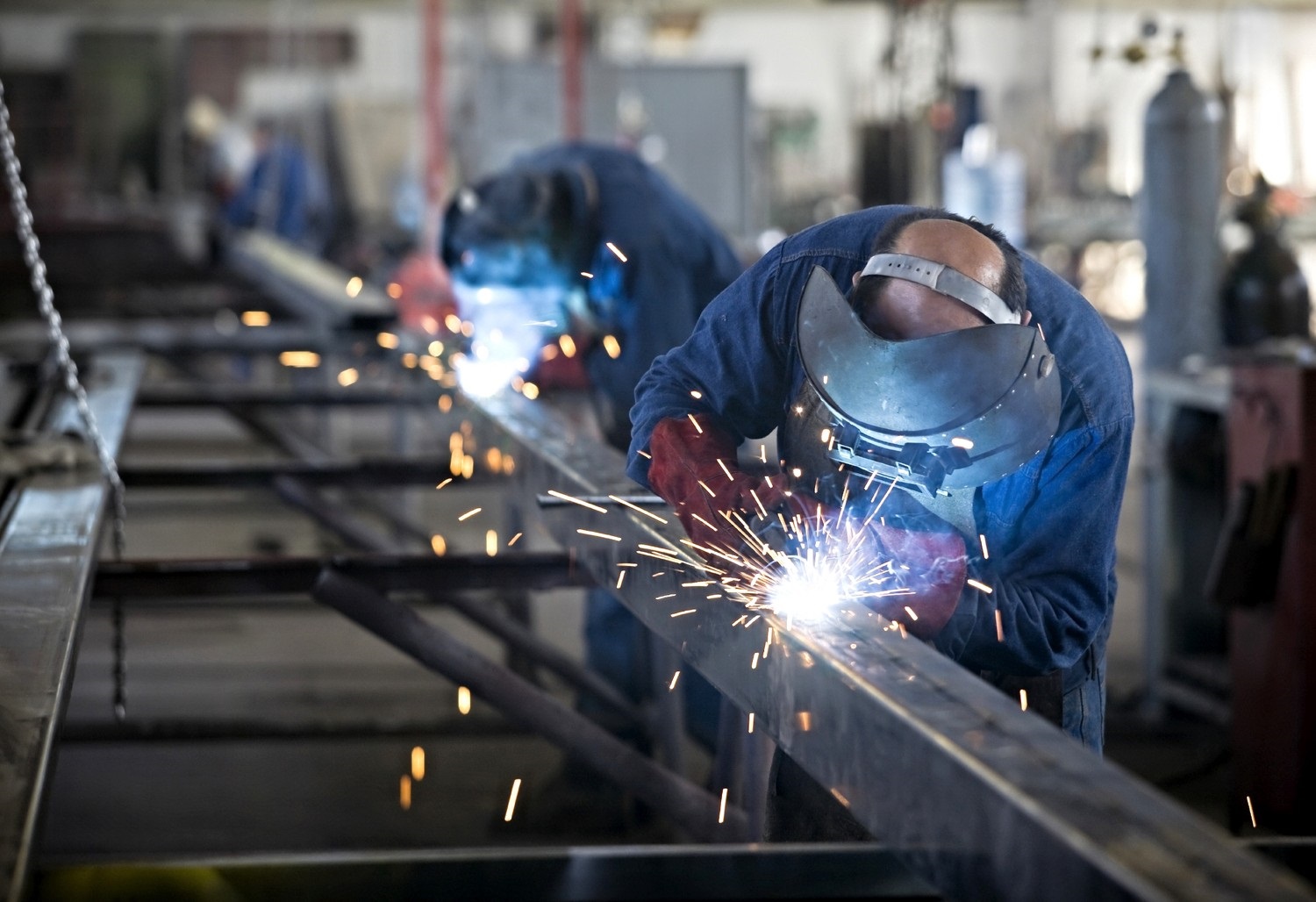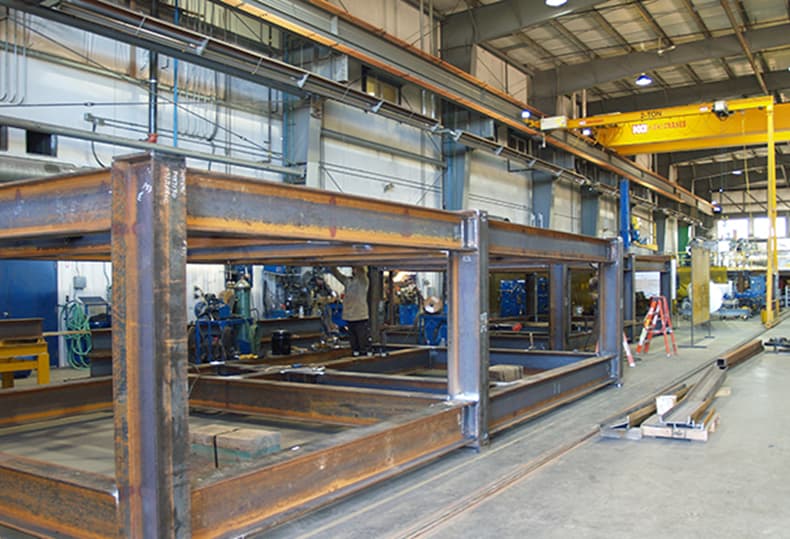Cutting-Edge Metal Fabrication Melbourne: Custom-made Solutions for Every Project
Cutting-Edge Metal Fabrication Melbourne: Custom-made Solutions for Every Project
Blog Article
Comprehensive Evaluation of Cutting-Edge Techniques in Steel Construction Sector
As the steel fabrication industry remains to evolve, the integration of innovative strategies has actually ended up being essential for staying affordable and fulfilling the needs of modern manufacturing requirements. From laser cutting improvements to the utilization of robotics and 3D printing in steel production, the landscape of fabrication techniques is quickly changing. With each development bringing its own set of obstacles and benefits, a thorough analysis of these methods is paramount for companies intending to streamline their procedures, enhance precision, and inevitably, raise the top quality of their steel manufacture outcome. In this vibrant industry where modern technology plays a crucial role, understanding the nuances of these sophisticated strategies is not just a choice however a necessity for those aiming to advance in the ever-evolving globe of steel manufacture.
Laser Reducing Improvements
In the realm of steel construction, laser reducing advancements have revolutionized the precision and performance of steel shaping processes. By taking advantage of the power of focused laser beam of lights, makers can now attain unequaled levels of accuracy when puncturing different kinds of metals. This technology allows complex styles to be executed with marginal product waste, making it an affordable remedy for sectors needing high precision parts.
One of the vital advantages of laser cutting is its capacity to manage a broad array of products, consisting of stainless steel, aluminum, and carbon steel, effortlessly. The procedure produces clean, burr-free edges, eliminating the requirement for added completing steps. Furthermore, the non-contact nature of laser cutting lowers the risk of product contamination, leading to better output.
Moreover, laser reducing machines can be programmed to make swift, accurate cuts, substantially lowering manufacturing time compared to standard cutting techniques. This speed and precision make laser cutting specifically appropriate for mass manufacturing environments where effectiveness is paramount. As technology remains to advance, laser cutting is poised to play an increasingly vital duty in the steel construction market.

CNC Machining Innovations
The advancement of CNC machining modern technologies has ushered in a brand-new period of precision and performance in the steel construction market. Computer Numerical Control (CNC) devices have actually revolutionized steel fabrication by using unmatched precision and repeatability in the production process. metal fabrication melbourne. Among the crucial innovations in CNC machining is the combination of innovative software systems that allow real-time monitoring and changes, causing enhanced efficiency and quality assurance
In addition, the development of multi-axis CNC makers has enabled the construction of complicated steel components with intricate styles that were formerly testing to create. These machines can carry out a vast array of machining procedures, consisting of milling, drilling, transforming, and grinding, all with high degrees of precision.
Furthermore, the incorporation of automation and robotics in CNC machining has structured production procedures, reduced lead times, and decreased the margin of mistake. This combination of advanced technologies not only increases performance yet likewise guarantees regular top quality throughout all made steel components. In conclusion, CNC machining developments continue to drive improvements in the steel manufacture market, establishing new criteria for accuracy and productivity.
Automated Welding Technologies
Automated welding technologies have changed the steel construction market, boosting efficiency and accuracy in the welding process. These innovative technologies make use of computer-controlled systems to automate the welding procedure, leading to greater efficiency degrees and improved weld top quality. One of the crucial advantages of automated welding is the ability to carry out complex welds with regular accuracy, lowering the probability of errors and remodel.
Robot welding systems go to the leading edge of automated welding technologies, providing unmatched rate and accuracy. These systems can manage a large range of welding jobs, her comment is here from simple to detailed, effortlessly (steel fabricators melbourne). By using innovative sensing units and software application, robotic welders can adapt to variations in material and joint geometry, making sure an attire and reliable weld
Moreover, automated welding modern technologies boost office safety and security by decreasing the exposure of human welders to unsafe fumes and intense warm. As the steel fabrication market remains to advance, integrating automated welding modern technologies will certainly be necessary for business wanting to remain competitive and satisfy the expanding needs for high-quality welded products.
Robotics Integration in Manufacture
Making use of robot systems in construction procedures has actually become a critical technique for boosting effectiveness and accuracy in modern-day production settings. Robotics assimilation in steel manufacture supplies a myriad of benefits, including enhanced productivity, improved quality assurance, and improved precaution. These advanced robotic systems are equipped with advanced sensing units and programming capacities, permitting them to carry out elaborate tasks with a high degree of accuracy and repeatability.
One of the key advantages of robotics combination in steel construction is the capacity to automate recurring tasks, such as product handling, reducing, welding, and setting up processes. This not just speeds up my sources production cycles however additionally reduces the danger of human mistake, causing greater general item high quality. Furthermore, robots can run 24/7, substantially boosting production result and meeting limited task deadlines.

3D Printing in Steel Manufacturing
Having reinvented the steel construction industry through robotics combination, the expanding expedition of 3D printing in steel production is poised to more advance the world of modern-day production strategies. 3D printing, likewise called additive manufacturing, supplies unmatched design flexibility and intricacy, making it possible for the development of complex steel structures that were previously unattainable with typical manufacturing methods. By utilizing computer-aided layout (CAD) software, producers can exactly manage the layer-by-layer deposition of steel material, resulting in components with enhanced geometries and performances.
One of the crucial benefits of 3D printing in steel production is its capability to lower product waste considerably. Unlike subtractive production processes where excess material is cut away, 3D printing only utilizes the necessary amount of steel required for the final component. This performance not just causes cost savings but also lines up with lasting production practices by reducing environmental impact.
Additionally, 3D printing makes it possible for rapid prototyping and customization, enabling for the manufacturing of tiny sets of intricate steel parts with short lead times. As the innovation proceeds to develop and become more obtainable, its integration into mainstream steel fabrication processes is anticipated to drive technology and effectiveness throughout the industry.
Conclusion
Finally, the steel construction sector has actually seen significant advancements in strategies such as laser cutting, CNC machining, automated welding, robotics combination, and 3D printing. These cutting-edge modern technologies have transformed the way steel items are made, leading to increased effectiveness, cost-effectiveness, and precision. Proceeded financial investment in these cutting-edge methods is critical for the industry to remain competitive and meet the needs of contemporary manufacturing procedures.
As the steel manufacture industry proceeds to evolve, the combination of advanced techniques has become necessary for staying affordable and satisfying the needs of modern-day production standards.One of the crucial advantages of laser cutting is its get more ability to deal with a large variety of materials, including stainless steel, light weight aluminum, and carbon steel, with ease.Automated welding technologies have reinvented the steel fabrication industry, improving efficiency and precision in the welding procedure.Having actually revolutionized the steel fabrication market through robotics assimilation, the expanding exploration of 3D printing in steel manufacturing is poised to further advance the realm of modern-day production methods.In verdict, the steel manufacture sector has seen significant innovations in strategies such as laser cutting, CNC machining, automated welding, robotics integration, and 3D printing.
Report this page